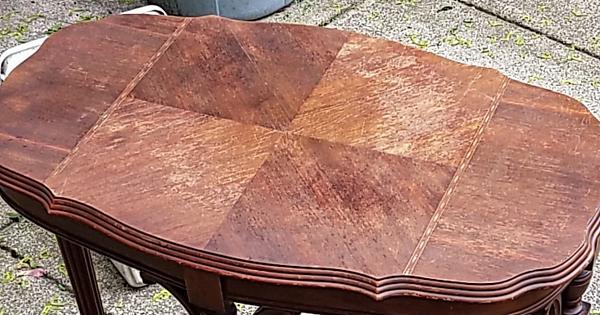This was an interesting one – we found this table on the curb on garbage day. The finish on the tabletop was peeling and rough. Possibly from water damage? We knew it would be challenging because the surface had a very thin wood veneer on it, but it wasn’t likely to be taken by anyone else in this condition so we lugged it home to try fixing it.
We had to sand the finish off, but we also had to be careful to avoid sanding through the veneer. We used a very smooth sandpaper (starting with 220 grit) and carefully sanded with the grain for each panel so as not to scratch the wood.
Once we had it completely cleaned off, we finished it with high gloss polyurethane. I don’t think we stained the wood first but it’s been awhile and it’s possible we did. This picture is during the first coat (applied following the grain). Once it was dry we sanded very lightly, wiped away the dust, and coated it again.
When I think about salvaging these things, I tell myself it’s not just the wood (decompostable or burnable for power) that I’m salvaging, but the resources and person-hours spent making it. Trees were cut and hauled and milled to size, the pieces transported, machined down, turned on lathes, planed, routed, cut, and glued. Even on a factory-made piece there’s a bit of history and it’s worth keeping around if possible.
The before and after pictures are impressive, very nice work!
Thank you! It was a fun one



